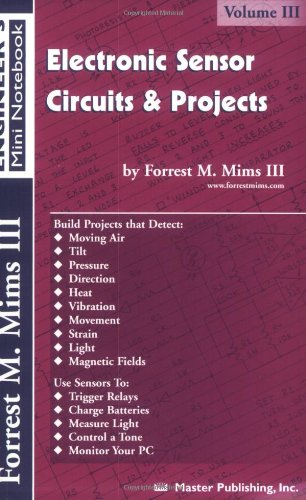Electronic Sensor Circuits & Projects pdf free
Par reiser jerry le vendredi, juillet 22 2016, 11:43 - Lien permanent
Electronic Sensor Circuits & Projects by Forrest M. Mims III


Electronic Sensor Circuits & Projects download
Electronic Sensor Circuits & Projects Forrest M. Mims III ebook
Page: 26
Format: djvu
ISBN: 0945053312, 9780945053316
Publisher: Master Publishing, Inc.
Normally, this is a three-core cable: one core for the signal and the other two for the supply lines. This circuit was designed as an aid in parking the car near the garage wall when backing up. The NI Multisim Fundamental Circuits series presents many frequently used circuits and design topologies, essential in the understanding of electronics. Have you seen Audi, Lexus or Ford rain sensing wipers and wondered how they work in these vehicles? Electronic sensor circuits convert light, temperature, sound, and other signals into a form that can be processed by electronic circuits. Here is the working of rain 555 Circuits, DIY Hobby Circuits, Simple Electronic Projects. Silly String Motion Sensor: F7HNSPGG1BB3QSW.MEDIUM[1]. Tiny Dew Sensor Circuit Diagram. Dew (condensed moisture) adversely affects the normal performance of sensitive electronic devices. This is a counter circuit that I would like to you view an another form of concept. Remote temperature measurements have to be linked by some sort of cable to the relevant test instrument. A simple motion sensing circuit using infrared LEDs and a servo motor sprays silly string at unsuspecting trick-or-treaters. A superb, simple project to make your house unique. LED D7 illuminates when bumper-wall distance is about 20 cm., D7+D6 illuminate at about 10 cm. We're having a project about sound sensor and our aim is to measure the decibel of the sound . Can anyone suggest ways on how can we built this? The most counter circuit that is often used in industrial applications such. Electronic Circuits and Projects Forum. Honorable Mention: While these don't involve electronics or circuitry, they're still incredible and deserve to be part of this list. Be sure to subscribe to HacknMod because you dont want to miss out on future DIY posts! The tattoos have been developed by Massachusetts-based engineering firm MC10, and contain flexible electronic circuits that are attached to the wearer's skin using a rubber stamp.